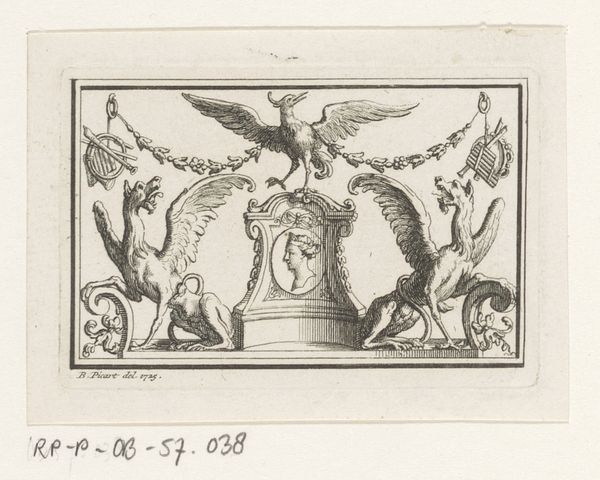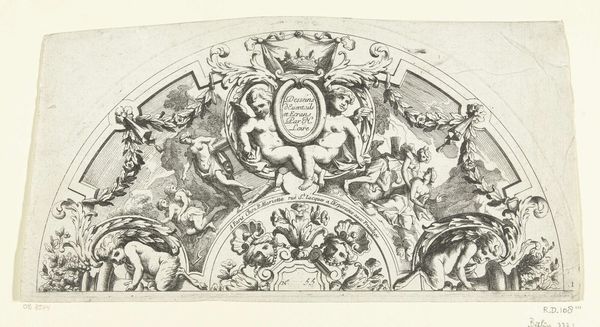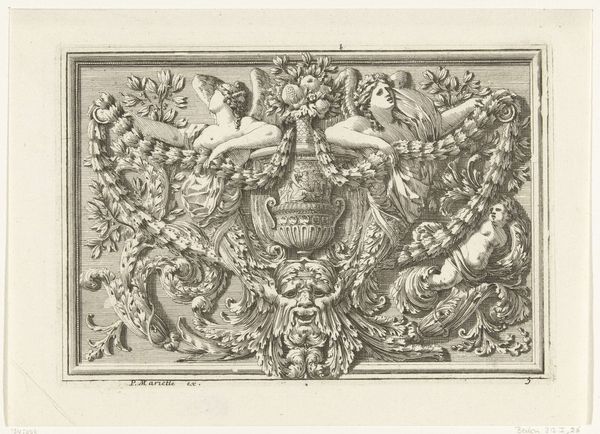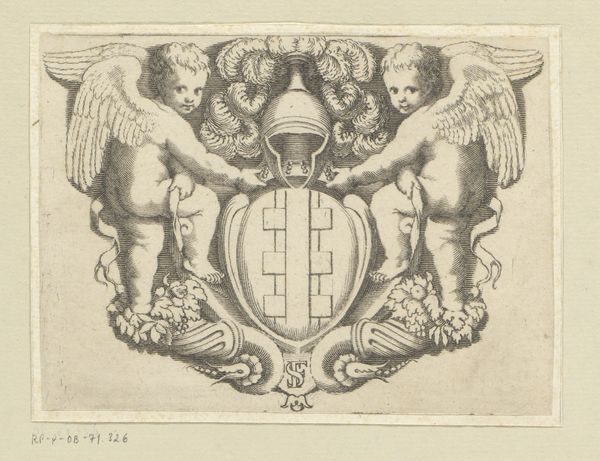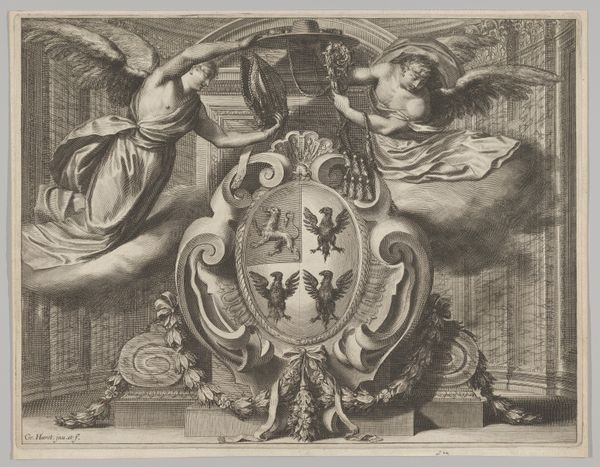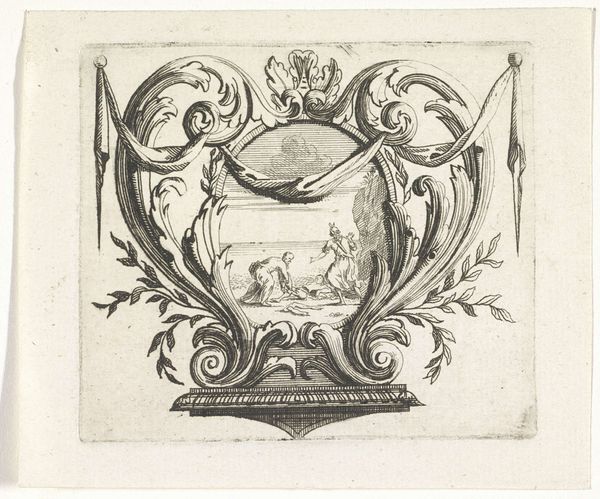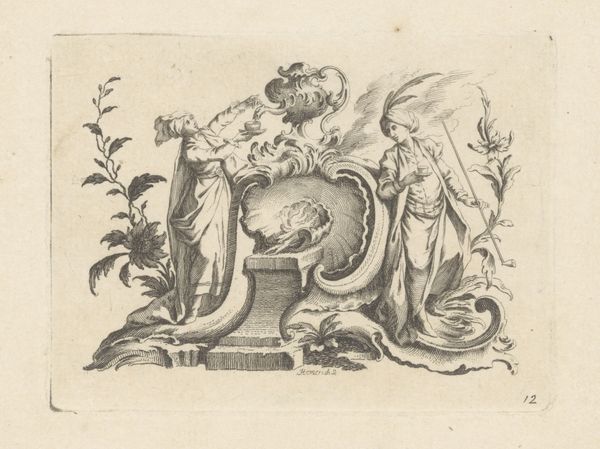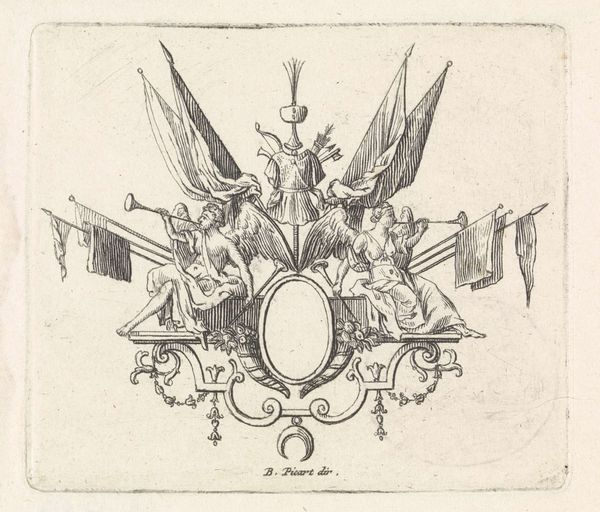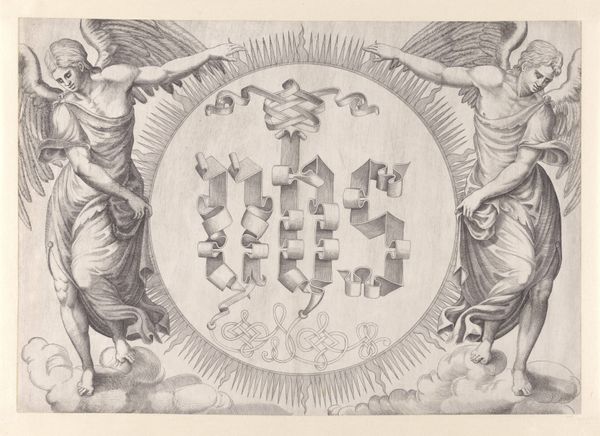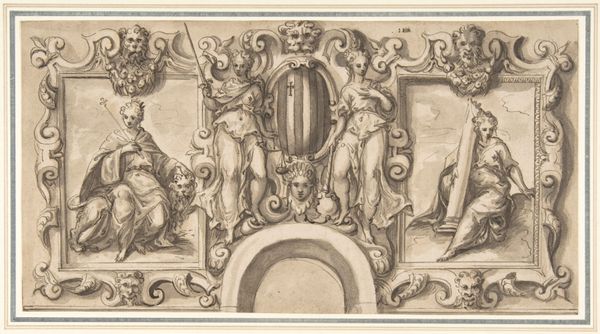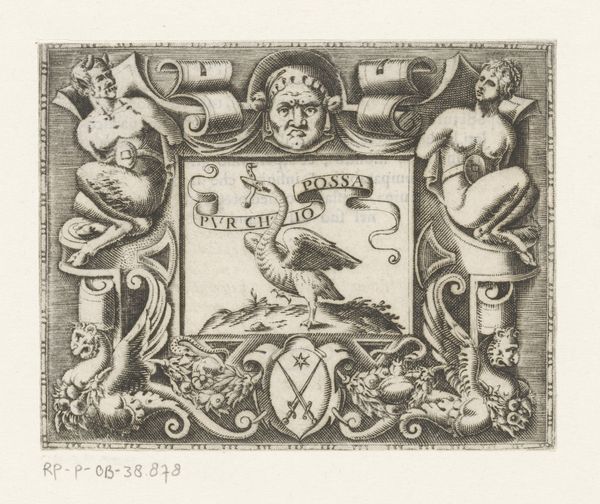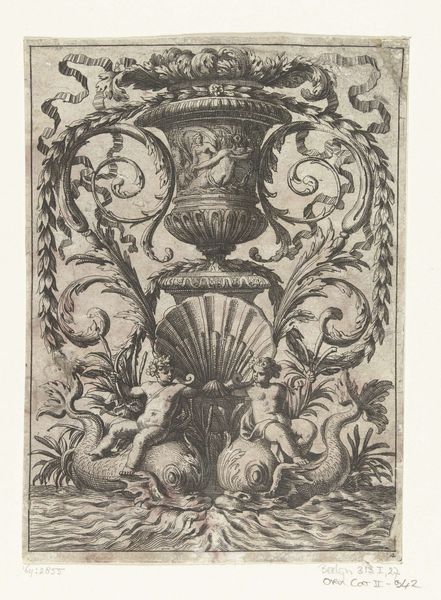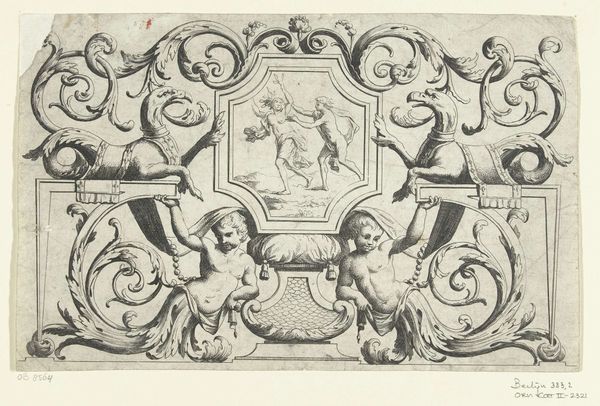
Dimensions: height 248 mm, width 381 mm
Copyright: Rijks Museum: Open Domain
Curator: Look at the starkness of the heraldic imagery in this engraving. Editor: Yes, my immediate impression is one of formidable authority. The lions, those weapons... It is a display of power, no? Curator: Precisely. This is the "Wapen van Haarlem," or Coat of Arms of Haarlem, created by Romeyn de Hooghe around 1688 or 1689. Its dense symbolism speaks volumes about Haarlem's historical context. Editor: I am fascinated by the composition. How do you read its various components—the lions, the crown, even the sword and stars emblazoned on the shield? Curator: Consider first the lions; as unwavering symbols of courage and strength. But this also represents a patriarchal system where power rests on such representations. The crown signifies Haarlem's status and the sword alludes to its historical role in defense. The stars… those may be for faith and noble deeds of this city. Editor: How might the historical power structures inform the style we see? Curator: Well, Baroque prints such as this, were largely funded through political institutions—the images became crucial components of their visual rhetoric. As such, the piece embodies that period’s self-conscious, sometimes flamboyant, approach to constructing social meanings. Even now, these symbolic figures play within collective memory. Editor: But the precision! The level of detailed hatching and cross-hatching… all the lines are building towards a unified expression of strength. De Hooghe truly manipulated visual components toward the grand expression that the historical narratives required. Curator: Agreed. These works are visual rhetoric given form, tools in shaping the perceptions of not only their subjects, but of themselves within this larger historical theatre. Editor: This discussion reminds me that when analyzing art, a full image unfolds with each point of view, one supporting and enhancing another. Curator: I concur entirely; seeing how the political and social dimensions of history have formed art through symbolism offers another layer in decoding historical memory.
Comments
No comments
Be the first to comment and join the conversation on the ultimate creative platform.
